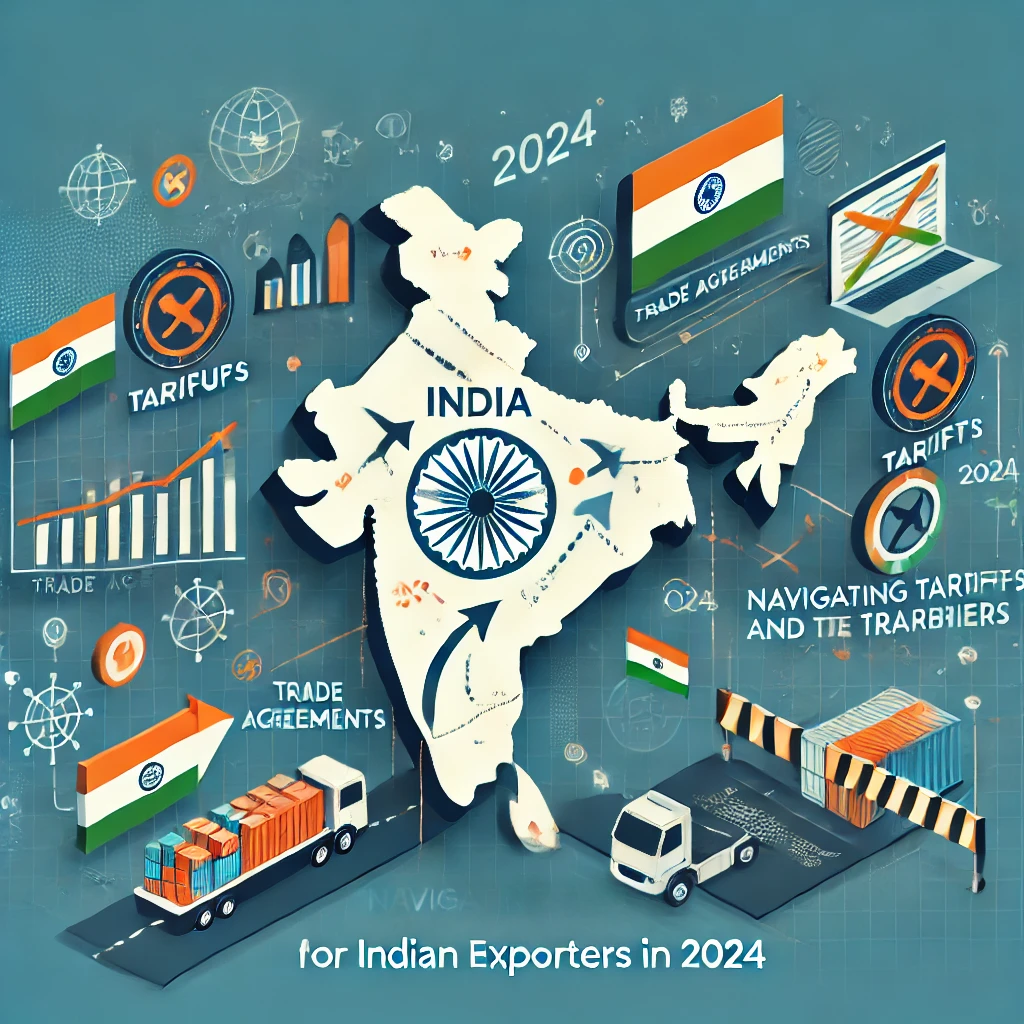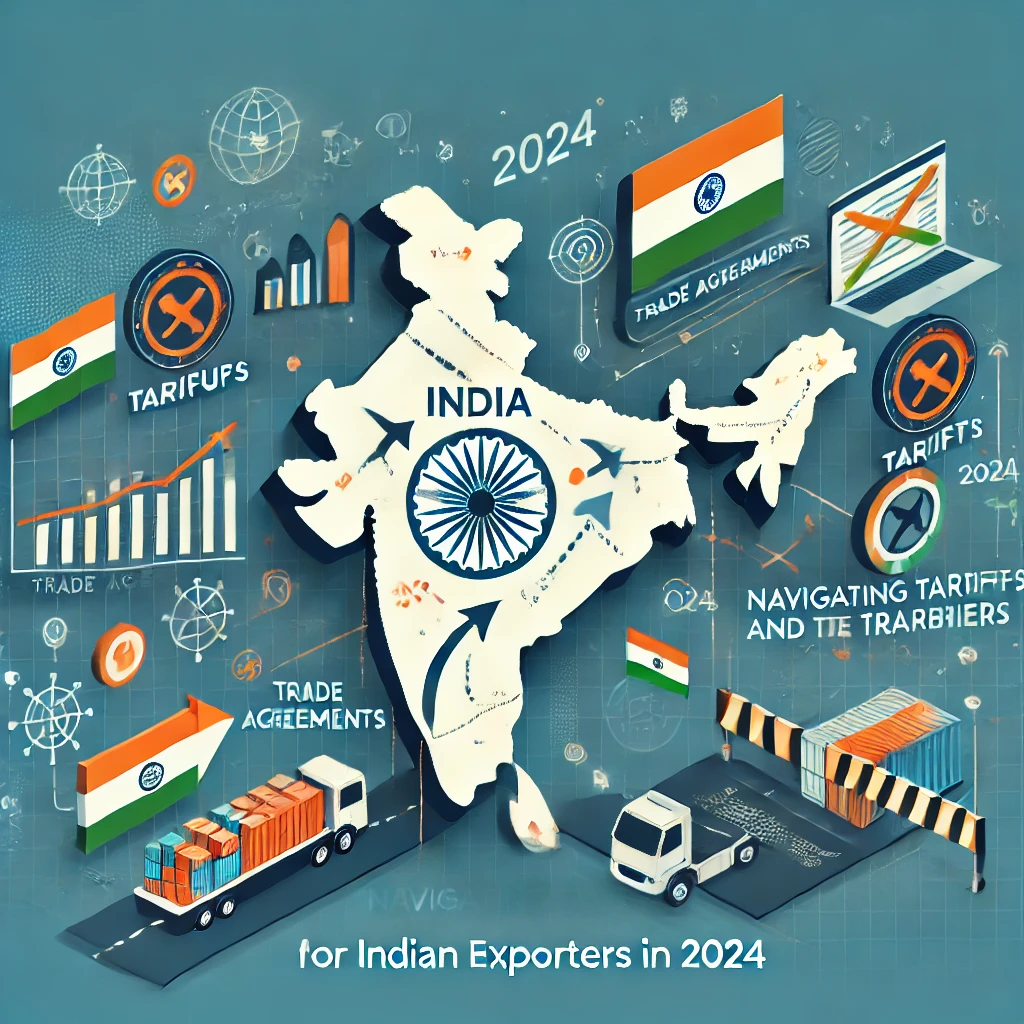Introduction to Indian Pharmaceutical Export
In recent years, the importance of Indian pharmaceutical exports has intensified, underpinned by the growing global demand for healthcare solutions.
With a robust portfolio of products that includes generic drugs, active pharmaceutical ingredients (APIs), and biosimilars, India caters to a wide array of therapeutic sectors.
The enhancement of regulatory frameworks and adherence to international quality standards have further fortified India’s position as a trusted supplier in the global market.
Moreover, the industry’s significance is amplified by ongoing research and development efforts aimed at innovative drug formulations and novel therapeutic approaches.
Indian pharmaceutical companies are increasingly investing in cutting-edge technologies and embracing digital transformation, leading to a more efficient manufacturing process.
These innovations not only increase productivity but also ensure compliance with stringent global regulatory requirements, thereby bolstering India’s export capabilities.
As we explore the various innovations in the Indian pharmaceutical sector in 2024, it is crucial to understand how these advancements facilitate the export from India of essential medicines.
The focus will be on breakthrough technologies, strategic partnerships, and the enhancement of supply chain efficiencies that are shaping the future of Indian pharmaceutical exports in an increasingly competitive global market.
Key Innovations Driving Growth
In recent years, the Indian pharmaceutical sector has witnessed remarkable innovations that are significantly boosting the country’s ability to export from India.
These advancements span various domains, including biotechnology, artificial intelligence, and enhanced manufacturing processes, each contributing uniquely to the industry’s growth trajectory.
One of the most impactful innovations is in the field of biotechnology, which has transformed the landscape of drug development.
Biotechnology utilizes living organisms and systems to develop products, including biopharmaceuticals.
As Indian companies increasingly embrace biotechnological advancements, they have developed a range of biosimilars and monoclonal antibodies that are crucial for treating complex diseases.
This innovation not only enhances the quality of medical products but also positions India as a competitive player in the global pharmaceutical market, thus encouraging significant export from India.
Furthermore, the integration of artificial intelligence (AI) into drug development processes has revolutionized how pharmaceutical companies operate.
AI algorithms can analyze vast datasets, identifying potential drug candidates more efficiently than traditional methods.
By streamlining the research and development process, AI enables quicker time-to-market for new drugs, lowering production costs and optimizing resource allocation.
As efficiency improves, pharmaceutical exports from India are expected to increase, solidifying the country’s standing in the international market.
Lastly, innovations in manufacturing processes, such as the adoption of continuous manufacturing techniques, are reshaping the industry’s landscape.
Continuous manufacturing allows for the production of pharmaceuticals in a more streamlined and cost-effective manner, reducing waste and enhancing the overall quality of products.
This efficiency not only supports domestic supply but also significantly boosts the potential for export from India, as Indian firms can meet international quality standards while ensuring competitive pricing.
Regulatory Changes and Their Impacts
The landscape of pharmaceutical exports from India is undergoing significant transformations due to recent regulatory changes.
The Indian government has recognized the critical importance of adhering to international standards to enhance the competitiveness of its pharmaceutical sector on a global scale.
As such, efforts have been made to streamline regulations, ensuring that Indian pharmaceutical companies can meet the stringent requirements set forth by international markets.
One of the primary advancements has been the implementation of a more transparent and expedited approval process for pharmaceutical products.
This shift not only accelerates time-to-market for exporters but also allows companies to respond swiftly to global demands.
With regulations becoming less cumbersome, pharmaceutical firms can now focus on innovation and product development with the assurance that their exports will find favorable reception abroad.
Additionally, the emphasis on compliance with internationally recognized quality standards, such as Good Manufacturing Practices (GMP) and Good Distribution Practices (GDP), has visibly improved the overall quality of pharmaceuticals exported from India.
Such compliance not only fosters trust among foreign buyers but also enhances the reputation of Indian pharmaceuticals as reliable suppliers.
Enhanced quality assurance measures enable Indian companies to penetrate new markets with confidence, thereby broadening their export capabilities.
Moreover, the regulatory framework now encourages collaboration with global regulatory bodies, ensuring that Indian pharmaceutical exports align with international expectations.
This proactive approach fosters dialogue between Indian regulators and their overseas counterparts, paving the way for smoother trade relations.
In this evolving scenario, Indian pharmaceutical companies are better equipped to navigate the complexities of international trade.
The regulatory changes not only improve the efficacy of the export process but also contribute significantly to the overall growth of the pharmaceutical export market from India, instilling confidence among stakeholders and encouraging investments in the sector.

Emerging Markets and Opportunities
In 2024, Indian pharmaceutical exports are witnessing substantial growth, particularly in emerging markets such as Africa, Southeast Asia, and Latin America.
These regions present a myriad of opportunities for Indian companies seeking to expand their international footprints.
As healthcare systems evolve and the demand for affordable medications rises, Indian pharmaceutical manufacturers are uniquely positioned to cater to these needs through cost-effective solutions and high-quality products.
Africa, with its diverse healthcare challenges and a burgeoning population, has become a focal point for Indian export from India.
The continent is characterized by a significant burden of diseases and limited access to medications.
Indian pharmaceutical companies are increasingly investing in local partnerships, establishing distribution networks, and tailoring products to address specific health issues prevalent in various African countries.
This not only enhances availability but also builds trust within the local populations.
Similarly, Southeast Asia has emerged as a vibrant market for Indian pharmaceutical exports. Countries such as Indonesia, Vietnam, and the Philippines are experiencing rapid economic growth coupled with increasing healthcare spending.
The rise in non-communicable diseases has triggered higher demand for innovative drugs and generics.
Indian firms are leveraging their research capabilities to introduce advanced therapies and generic versions of popular drugs, thus tapping into the market’s potential.
However, navigating regulatory environments and intellectual property challenges will require strategic planning.
Latin America, characterized by both vast opportunities and complexities, presents a unique landscape for Indian pharmaceutical exports.
Countries like Brazil and Mexico are witnessing a transformation in their healthcare sectors, creating openings for Indian manufacturers.
Nevertheless, varying regulatory standards across the region may pose challenges that necessitate a thorough understanding of local compliance requirements.
Overall, Indian pharmaceutical exporters must adopt a comprehensive approach recognizing the unique characteristics and demands of each emerging market to harness their potential successfully.
Sustainability and Green Practices in Pharmaceutical Exports
The Indian pharmaceutical industry is increasingly embracing sustainability and adopting green practices that align with global environmental standards.
As the demand for eco-friendly products rises among consumers worldwide, manufacturers have recognized that sustainable initiatives not only enhance their corporate image but also significantly boost their export potential.
This growing commitment to sustainability is poised to improve the profile of pharmaceutical exports from India.
One of the primary areas of focus is the sustainable sourcing of raw materials.
Indian manufacturers are beginning to prioritize suppliers who demonstrate sustainable practices, ensuring that raw materials used in drug formulations are harvested ethically and responsibly.
This approach not only minimizes environmental impact but is also appealing to international buyers who seek assurance of sustainability within the supply chain.
The use of reliable certifications further reinforces the commitment to responsible sourcing, thereby enhancing the credibility of exports from India.
Moreover, eco-friendly manufacturing processes are being implemented across various pharmaceutical plants in India.
These innovative techniques include energy-efficient operations, waste reduction strategies, and the incorporation of renewable energy sources, such as solar and wind power, into manufacturing workflows.
Utilizing biodegradable packaging options is another initiative gaining traction among Indian exporters, facilitating a shift toward a circular economy.
Such practices resonate well with environmentally conscious consumers and regulatory bodies alike, driving up interest in Indian pharmaceutical exports.
As a result of these green initiatives, the Indian pharmaceutical sector is not only contributing positively to environmental sustainability but is also establishing itself as a responsible player in the global market.
The shift towards sustainable practices signals a broader trend where environmental considerations are becoming central to the competitiveness of pharmaceutical exports from India, ensuring long-term viability in an evolving marketplace.
Role of Technology in Supply Chain Management
The integration of technology into supply chain management has emerged as a critical element for enhancing the efficiency and reliability of pharmaceutical exports from India.
Digital tools and blockchain technology are particularly influential in redefining how the supply chain operates.
By facilitating real-time tracking, these technologies offer unprecedented visibility into production and distribution processes, allowing stakeholders to monitor the movement of pharmaceutical products throughout the entire export journey.
One of the primary advantages of employing digital tools is the ability to streamline operations.
Automated systems simplify inventory management, reducing the likelihood of errors and ensuring that pharmaceutical companies maintain optimal stock levels.
As a result, organizations can respond more swiftly to market demands and regulatory requirements, thus enhancing their overall competitiveness in the global export landscape.
Moreover, blockchain technology introduces a layer of transparency that is invaluable within the pharmaceutical supply chain.
By providing a decentralized ledger of transactions, blockchain enables stakeholders to verify the authenticity of products, significantly reducing counterfeiting risks.
This transparency not only fosters trust among exporters, importers, and consumers but also aligns with regulatory frameworks aimed at ensuring drug safety and efficacy.
In addition to cost reduction and enhanced transparency, technology facilitates better communication among supply chain participants.
Digital platforms enable real-time collaboration, ranging from manufacturers to logistic providers and regulatory bodies.
This interconnectedness is critical to ensuring that all parties are informed of any potential disruptions, thereby allowing for proactive measures to be implemented to mitigate risks in the export process.
Overall, the adoption of advanced technology in supply chain management is transforming the pharmaceutical export sector in India, driving efficiency, decreasing costs, and reinforcing the reliability of exporting practices.
As Indian pharmaceutical companies continue to innovate, the role of technology will undoubtedly be pivotal in maintaining their position in the global market.
Collaboration with Global Partners
In recent years, the Indian pharmaceutical industry has witnessed remarkable growth, particularly in the realm of international trade.
A pivotal factor contributing to this success is the strategic collaboration between Indian pharmaceutical companies and their global healthcare counterparts.
These partnerships are not only fostering innovation but are also improving the quality and reach of healthcare products exported from India.
One of the key aspects of these collaborations is the sharing of knowledge and expertise. Indian companies often join forces with established global organizations that possess advanced research and development capabilities.
This exchange of information leads to the creation of high-quality pharmaceuticals that meet international standards, enhancing the global competitiveness of Indian products.
Furthermore, such collaborations allow Indian firms to access cutting-edge technology and innovative practices, thus driving breakthroughs in drug development and formulation.
Market expansion is another critical advantage derived from these strategic partnerships.
By aligning with other leading healthcare organizations, Indian pharmaceutical companies can leverage established market networks to enhance their export from India.
These collaborations often involve joint ventures and co-marketing agreements, facilitating entry into new markets where local knowledge and established channels are essential for success.
As a result, Indian exporters are effectively increasing their footprint in regions such as North America, Europe, and emerging markets, solidifying their place in the global pharmaceutical supply chain.
Moreover, these alliances contribute to meeting diverse healthcare needs across the globe, including the production of specialized medicines for various diseases.
The collaborative efforts also emphasize the importance of sustainable practices in the pharmaceutical industry, which aligns with global health initiatives.
By working together, Indian pharmaceutical companies and their global partners enhance their ability to develop innovative solutions that significantly benefit public health worldwide.
Case Studies of Successful Exporters
As the Indian pharmaceutical industry continues to evolve, numerous exporters have effectively embraced innovation and adaptation in 2024, leading to remarkable success in the global market.
This section explores select case studies that illustrate how these companies have enhanced their export from India strategies and implemented cutting-edge solutions.
One notable example is Bharat Biotech, which successfully expanded its international presence by leveraging advanced biotechnology.
In response to the global demand for vaccines and biopharmaceuticals, Bharat Biotech invested significantly in research and development, resulting in the production of a groundbreaking COVID-19 vaccine.
This strategic focus not only enhanced their reputation but also increased their export from India by tapping into new markets across Europe and Asia.
Another exemplary case is Sun Pharmaceutical Industries, which has embraced digital transformation within its operations.
By integrating artificial intelligence and big data analytics into their supply chain processes, Sun Pharma has streamlined its production and logistics, reducing costs and improving efficiency.
This innovation has facilitated a more robust export from India of generic medications, allowing the company to respond swiftly to international market demands while maintaining high-quality standards.
Moreover, Dr. Reddy’s Laboratories has adopted sustainable practices as a core part of its export strategy.
The company has implemented green manufacturing processes and sought compliances with global environmental standards.
This commitment to sustainability has not only enhanced their brand image but also created new opportunities for export from India, especially in regions with strict environmental regulations, thereby allowing them to enter markets that prioritize eco-friendly products.
These case studies highlight the dynamic nature of the Indian pharmaceutical export sector.
Through strategic innovations and adaptability, these leading exporters are not only securing their positions in the market but also reinforcing India’s status as a preeminent player in the global pharmaceutical industry.
Future Trends in Pharmaceutical Exports
The landscape of pharmaceutical exports from India is expected to undergo significant transformations in the coming years, driven by various factors including technological innovation, changing global healthcare demands, and evolving regulations.
As the world’s largest provider of generic medications, India’s pharmaceutical industry is poised for growth, buoyed by advancements in biopharmaceuticals and biotechnology.
These innovations will not only bolster the production capacity but also improve the quality and efficacy of products being exported from India.
One of the most promising trends anticipated is the rise of personalized medicine, which tailors treatment to individual patient needs.
This shift will likely fuel demand for specialized pharmaceutical exports, as India enhances its capabilities in research and development.
Additionally, the global healthcare community’s increasing focus on preventative care and wellness is expected to lead to a higher demand for over-the-counter products and nutraceuticals, further diversifying India’s pharmaceutical export portfolio.
Moreover, digital transformation is set to play an instrumental role in the future of pharmaceutical exports.
The integration of artificial intelligence, machine learning, and data analytics into pharmaceutical operations can optimize supply chain processes, reduce costs, and enhance compliance with international regulatory standards.
As regulations continue to tighten globally, Indian manufacturers will need to adapt their practices to maintain competitiveness in international markets.
Lastly, sustainability and environmental considerations are becoming essential in the pharmaceutical industry.
As exporters from India align their production processes with global sustainability goals, innovations in green chemistry and eco-friendly manufacturing practices can boost their appeal in foreign markets.
In conclusion, the Indian pharmaceutical export sector is on the cusp of significant shifts, driven by these advancements and changing demands, which promise to redefine its role in global healthcare.









